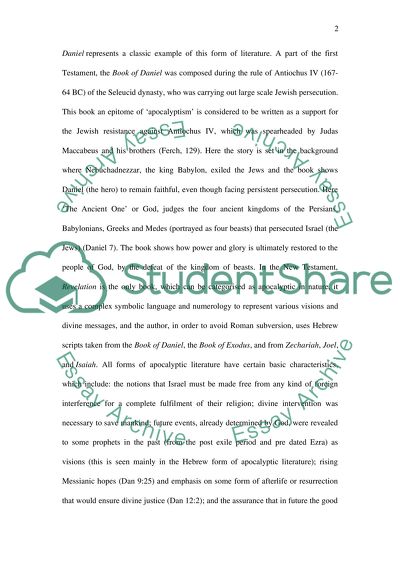Cite this document
(“Biblical Apocalyptic Identify the forth beast of Daniel 7:7-12 and the Essay”, n.d.)
Biblical Apocalyptic Identify the forth beast of Daniel 7:7-12 and the Essay. Retrieved from https://studentshare.org/religion-and-theology/1434529-biblical-apocalyptic-identify-the-forth-beast-of
Biblical Apocalyptic Identify the forth beast of Daniel 7:7-12 and the Essay. Retrieved from https://studentshare.org/religion-and-theology/1434529-biblical-apocalyptic-identify-the-forth-beast-of
(Biblical Apocalyptic Identify the Forth Beast of Daniel 7:7-12 and the Essay)
Biblical Apocalyptic Identify the Forth Beast of Daniel 7:7-12 and the Essay. https://studentshare.org/religion-and-theology/1434529-biblical-apocalyptic-identify-the-forth-beast-of.
Biblical Apocalyptic Identify the Forth Beast of Daniel 7:7-12 and the Essay. https://studentshare.org/religion-and-theology/1434529-biblical-apocalyptic-identify-the-forth-beast-of.
“Biblical Apocalyptic Identify the Forth Beast of Daniel 7:7-12 and the Essay”, n.d. https://studentshare.org/religion-and-theology/1434529-biblical-apocalyptic-identify-the-forth-beast-of.


